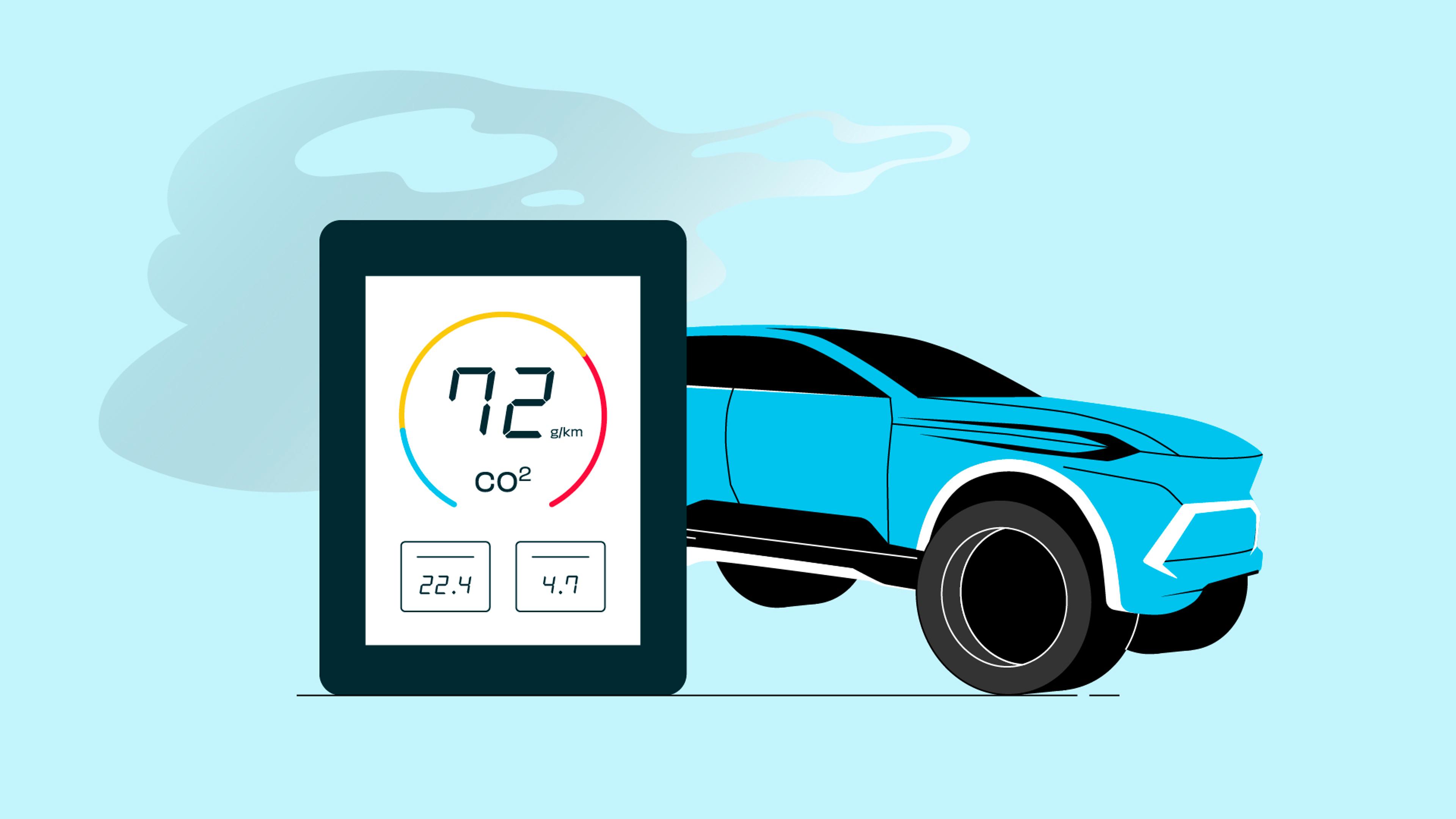How much CO2 does an electric car emit?

The world is turning to fully electric cars as a cleaner alternative to traditional gas-powered vehicles. However, there’s still some confusion around the environmental impact of electric cars, particularly in terms of their carbon emissions.
While electric vehicles don’t emit carbon dioxide (CO2) directly from their tailpipes, lots of CO2 emissions are associated with their production and use.
Let’s find out how much CO2 electric cars actually produce and what factors affect these emissions the most.

Need help buying a used car?
Enter a VIN code to learn more about any vehicle!
CO2 emissions of electric vehicles
Electric cars are zero tailpipe emission vehicles, meaning they don’t produce any emissions.
However, it doesn’t mean that electric cars are as green as nature. When you buy a new EV, lots of greenhouse gases have already been produced by making it, and you will produce more by using it.
What is CO2?
Carbon dioxide (CO2) is the most common greenhouse gas. It’s often used to measure air quality, because the more CO2 is in the air, the more it’s polluted.
How the CO2 works is simple: the sun sends energy to the Earth, and the Earth sends it back into space. CO2 traps that heat inside the atmosphere, making the Earth's surface warmer. The more CO2 there is, the warmer our atmosphere gets.
The increasing percentage of CO2 in the atmosphere can cause headaches, dizziness, increased heart rate, and it’s also the main cause for climate change. Carbon dioxide levels have increased by 50% since industrial times and today are higher than ever.
How much CO2 does an electric car emit?
Fully electric cars don’t emit any CO2 and are more environmentally friendly than gasoline ones, but the difference between the two depends on various factors and is often lower than people think.
For the end user, replacing toxic gasoline with electricity seems like a huge contribution to the greener environment, but battery manufacturing and where your electricity comes from are the main things affecting CO2 emissions.
According to the Volvo C40 Recharge Carbon footprint report, the making of an electric vehicle requires up to 60% more carbon dioxide than making a gasoline or diesel car. The majority of this is due to the need for rare metals used in lithium-ion batteries.
For instance, the manufacturing of the Tesla Model 3 battery can produce 7,000-35,000 lbs (3,200-15,800 kg) of CO2, depending on what energy sources are being used in the process. However, over the years electric vehicles leave a much smaller carbon dioxide footprint than gas-guzzling cars.
Electricity used to charge an electric car
Choosing a sustainable energy source is essential if you want to make your EV “green.” While wind and solar energy produce 1.4 oz (40 g) of CO2 per kWh, it’s 1.1 lbs (500 g) with natural gas, 1.8 lbs (800 g) with oil, and around 2.2 lbs (1 kg) with coal.
According to EV database, an electric car uses 20 kWh of power per 62 miles (100 km) on average, meaning that you’ll produce 1.8 lbs of CO2 each 60 miles if you fill it up using solar power and 44 lbs (20 kg) if you use coal-powered electricity.
The Department of Energy reveals that the average annual emissions of an electric vehicle is 2,817 lbs (1,278 kg) of CO2, while for gasoline cars it’s over 4 times more – 12,593 lbs (5,712) kg of CO2.
The Nissan Leaf, Hyundai Kona Electric, various Tesla models, and other popular electric cars [DK translation needed] produce less than 2.2 lbs (1 kg) of CO2 for every 6.2 miles (10 km), while most gasoline SUVs produce up to 8.8 lbs (4 kg).
How do electric cars compare to gasoline-powered cars?
Many people still aren’t familiar with EVs, which discourage them from moving away from gasoline and diesel cars. Understandably, they tend to compare the pros and cons of electric and conventional vehicles to make sure they’re ready for a change.
Thankfully, electric vehicles are better for a number of reasons:
- They produce less greenhouse gas emissions
- Electric motors are simpler and more reliable than gasoline engines
- A much quieter and smoother ride
- More innovative features
- Instant torque
While we’re used to modern gasoline cars that already are refined and economical, they’re also becoming overengineered.
You’ve probably noticed that even small petrol cars can be extremely powerful and well-equipped, but behind that lay dozens of control units, a few miles of wires, and all kinds of sensors. Meanwhile, new electric cars have a few times less moving parts, minimal noise, and they require less maintenance.
Since EVs are expensive and have a limited range, many drivers still don’t rush to make a shift.
On average, an electric car costs $20,000 more than the equivalent gas-powered car, so potential buyers often find that they can afford a much nicer and better equipped car if they’re going for gasoline models.
Also, many people still prefer a few-minute stops at a gas station instead of long charging times and limited range.

Check your registration number
Avoid costly problems by checking a vehicle's history. Get a report instantly!
Emission tax on electric vehicles
Since electric cars don’t produce tailpipe emissions, emission tax on electric cars is zero.
EV buyers often get generous tax credits and cash rebates for contributing to a greener environment, additional parking spaces in prime locations, and discounts on charging equipment. However, as popularity of EVs is rapidly increasing, they won’t be exempt from road and emission tax at some point in the future, making the motoring tax system fairer.
Electric vehicles make a positive impact on the environment because they’re much greener, even when powered with electricity from fossil fuel power plants. However, as long as the world relies on fossil fuels and uses the same old-fashioned battery design, we’re still far away from the full potential of electric cars.
